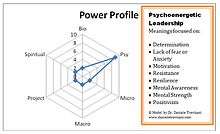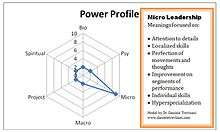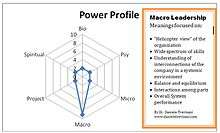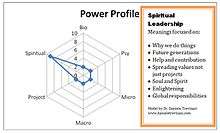Human resources
| Occupation | |
|---|---|
Occupation type | Department within an organization |
Activity sectors | Economy and business |
| Description | |
| Competencies | Staffing (recruitments, dismissals, managing labour law, employment standards, administration and employee benefits) and bringing out the best work ethic |
Related jobs | Workforce, human capital, manpower, talent, labour, personnel, people, HR analytics, recruitment, learning and development |
Human resources are the people who make up the workforce of an organization, business sector, or economy. "Human capital" is sometimes used synonymously with "human resources", although human capital typically refers to a more narrow view (i.e., the knowledge the individuals embody and economic growth). Likewise, other terms sometimes used include "manpower", "talent", "labour", "personnel", or simply "people".
A human-resources department (HR department) of an organization performs human resource management, overseeing various aspects of employment, such as compliance with labour law and employment standards, administration of employee benefits, and some aspects of recruitment and dismissal.
Definition of staffing or personnel management
Staffing is a process of hiring and or positioning in an organization.[1] According to the Exa-Factors Staffing Process (6 factors model) developed by the European researcher Daniele Trevisani, staffing can be considered "the process of identifying and selecting the specific role-energies that the organization requires in order to be effective", this implies that staffing should take into account the degree of "energy" required by any given role according to six specific variables, which can also be used to graphically profile staffing concepts:






- body strength and bodily kinesthetic requirements (different positions require a different set of body characteristics, such as physical strength and endurance for construction workers, or highly kinesthetic precision for surgeons),
- motivational energy (degree of motivation required in the role-performances, from medium such as in clerical jobs, to extreme such as in special forces or agonistic sports),
- micro-skills set (degree of ability into specific sets of knowledge that define a role),
- macro-skills set (e.g. for a general manager, knowledge of logistics, marketing, procurement, sales, finance, and HR, while for a teacher, beyond the specific teaching area, teaching and pedagogical skills become a part of the macro-skills set),
- project-management skills (to what extent the personnel should be required as dependent from external orders or dispositions, or able to define by him/herself the steps, deadlines and phases necessary to achieve any given objective),
- spiritual values, moral values, wisdom, inspirational skills (at which extent the role can be or become a role-model, what do we expect from him/her as role behaviors connected to values and immaterial/intangible assets).[2]
This approach enables the graphic depiction for the "shape" of a staffing need, in order to facilitate understanding of the global view for the role and hiring processes.
Human resources activities
A Human Resources Manager has several functions in a company: [3]
- Determine needs of the staff.
- Determine to use temporary staff or hire employees to fill these needs.
- Recruit and train the best employees.
- Supervise the work.
- Manage employee relations, unions and collective bargaining.
- Prepare employee records and personal policies.
- Ensure high performance.
- Manage employee payroll, benefits and compensation.
- Ensure equal opportunities.
- Deal with discrimination.
- Deal with performance issues.
- Ensure that human resources practices conform to various regulations.
- Push the employees' motivation.
Managers need to develop their interpersonal skills to be effective. Organisations behaviour focuses on how to improve factors that make organisations more effective.
Origins
Pioneering economist John R. Commons used the term "human resource" in his 1893 book The Distribution of Wealth but did not further build upon it. The term "human resource" was subsequently in use during the 1910s and 1920s as was the notion that workers could be seen as a kind of capital asset. Among scholars the first use of "human resources" in its modern form was in a 1958 report by economist E. Wight Bakke.[4] The term began to become more developed in the 19th century due to misunderstandings between the employers and employees.[5]
The term in practice
From the corporate objective, employees have been traditionally viewed as assets to the enterprise, whose value is enhanced by further learning and development, referred to as human resource development.[6]
In regard to how individuals respond to the changes in a labour market, the following must be understood:
- Skills and qualifications: as industries move from manual to more managerial professions so does the need for more highly skilled staff. If the market is "tight" (i.e. not enough staff for the jobs), employers must compete for employees by offering financial rewards, community investment, etc.
- Geographical spread: how far is the job from the individual? The distance to travel to work should be in line with remuneration, and the transportation and infrastructure of the area also influence who applies for a position.
- Occupational structure: the norms and values of the different careers within an organization. Mahoney 1989 developed 3 different types of occupational structure, namely, craft (loyalty to the profession), organization career path (promotion through the firm) and unstructured (lower/unskilled workers who work when needed).
- Generational difference: different age categories of employees have certain characteristics, for example, their behavior and their expectations of the organization.[7]
Concerns about the terminology
One major concern about considering people as assets or resources is that they will be commoditized, objectified and abused. Some analysis suggests that human beings are not "commodities" or "resources", but are creative and social beings in a productive enterprise. The 2000 revision of ISO 9001, in contrast, requires identifying the processes, their sequence and interaction, and to define and communicate responsibilities and authorities. In general, heavily unionised nations such as France and Germany have adopted and encouraged such approaches. Also, in 2001, the International Labour Organization decided to revisit and revise its 1975 Recommendation 150 on Human Resources Development, resulting in its "Labour is not a commodity" principle. One view of these trends is that a strong social consensus on political economy and a good social welfare system facilitate labour mobility and tend to make the entire economy more productive, as labour can develop skills and experience in various ways, and move from one enterprise to another with little controversy or difficulty in adapting.
Another important controversy regards labour mobility and the broader philosophical issue with usage of the phrase "human resources". Governments of developing nations often regard developed nations that encourage immigration or "guest workers" as appropriating human capital that is more rightfully part of the developing nation and required to further its economic growth. Over time, the United Nations have come to more generally support the developing nations' point of view, and have requested significant offsetting "foreign aid" contributions so that a developing nation losing human capital does not lose the capacity to continue to train new people in trades, professions, and the arts.
Human resources development
Human resources play an important part of developing and making a company or organization at the beginning or making a success at the end, due to the labour provided by employees. Human resources is intended to show how to have better employment relations in the workforce. Also, to bring out the best work ethic of the employees and therefore making a move to a better working environment.[8]
Human resources planning
Administration and operations used to be the two role areas of HR. The strategic planning component came into play as a result of companies recognizing the need to consider HR needs in goals and strategies. HR directors commonly sit on company executive teams because of the HR planning function. Numbers and types of employees and the evolution of compensation systems are among elements in the planning role.[9] Various factors affecting Human Resource planning Organizational Structure, Growth, Business Location, Demographic changes, environmental uncertainties, expansion etc. Additionally, this area encompasses the realm of talent management.
See also
- Human resource management
- Industrial and organizational psychology
- Chief human resources officer
- Human resource accounting
- Activity Based Working
References
- ↑ Heneman III, Herbert; Judge, Timothy A (2005). Staffing Organizations. USA: McGraw-Hill. ISBN 0-07-298722-7.
- ↑ Trevisani, Daniele (2016). Communication for Leadership: Coaching Leadership Skills (2 ed.). Ferrara: Medialab Research. p. 21. ISBN 978-1-329-59007-6.
- ↑ Mathis, R.L; Jackson, J.H (2003). Human Resource Management. Thomson.
- ↑ Kaufman, Bruce E. (2008). Managing the Human Factor: The Early Years of Human Resource Management in American Industry. Ithaca, New York: Cornell University Press. p. 312n28.
- ↑ Maugans, Chris. "21St Century Human Resources: Employee Advocate, Business Partner, Or Both?." Cornell HR Review (2015): 1-4. Business Source Complete. Web. 25 Sept. 2015
- ↑ Elwood F. Holton II, James W. Trott, Jr., 1996, Trends Toward a Closer Integration of Vocational Education and Human Resources Development, Journal of Vocational and Technical Education, Vol. 12, No. 2, p7
- ↑ "Managing Generational Differences in the Human Resources Role".
- ↑ Radhakrishna, A., and R. Satya Raju. "A Study On The Effect Of Human Resource Development On Employment Relations." IUP Journal Of Management Research 14.3 (2015): 28-42. Business Source Complete. Web. 25 Sept. 2015.
- ↑ "What Is the Difference Between Human Resource Management & Human Resource Planning?". Small Business - Chron.com. Retrieved 2015-10-08.
| Library resources about Human resources |